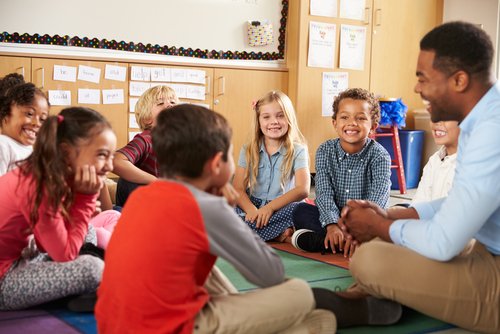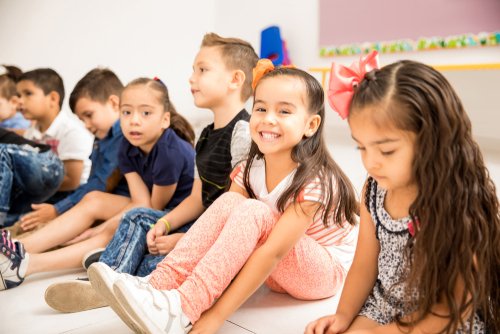Keys for Teaching Children Equality and Respect

Teaching children equality and respect has become more important than ever when it comes to accepting differences and avoiding conflicts.
We live in a world that is constantly becoming more globalized. Technology and changes in lifestyle have caused the borders between countries to disappear. Our contact with people from other parts of the world is growing more and more.
This globalization also demands that communities take on certain responsibilities. One of these responsibilities is the need to teach children about equality and respect towards others.
The main reason why this is so important is because we need to tolerate and live with people of all different backgrounds and beliefs. We must respect differences in others, which include:
- Ethnicity.
- Politics.
- Culture.
- Religion.
- Socioeconomics.
- Sexual orientation
- Etc.
Keys for teaching equality and respect
Providing an education that emphasizes the importance of equality and respect within a society and also among diverse communities may sound somewhat broad.
That’s why we want to present some basic notions that will allow you to consider the most important aspects of this teaching.
1. Demonstrating with actions that intolerance isn’t the right way
A very powerful tool about educating with equality and respect is to point out the atrocities that have occurred due to prejudice. Many wars and cruel battles that have pierced humanity were based on political, religious, and ethnic differences.
Unfortunately, this is still happening today. With society being so advanced and constantly developing, this is something we cannot allow to continue. Future generations and what we instill in them are the first thing we can change from our home.

2. We must eliminate stereotypes and prejudice
Society is constantly erasing the differences between men and women from the collective mind. We must do the same thing with the stereotypes and prejudices that they produce.
It’s fundamental that we teach our little ones not to associate certain people with certain tastes, jobs, abilities or defects.
Every human being is different and possesses certain particularities, preferences, beliefs and aptitudes. In no way do race, religion or any other factor limit any of these qualities.
3. Be careful with the content that children access
To teach equality and respect, we must prevent our children from having contact with messages that are xenophobic or racist. Unfortunately, these negative messages are all over the internet and other media sources. Therefore, parents need to be attentive to what their children do with technology.
If we don’t pay attention, then we’re leaving our children vulnerable to the influence of malicious ideas. These ideas have nothing to do with the values that we want to promote in our families.
“This globalization, with all the positive aspects that it involves, also demands that communities take on certain responsibilities. One of these responsibilities is the need to teach children about equality and respect towards others”
4. Demonstrate the benefits of an integrated society
Many achievements in different areas of modern society have been made by people with different characteristics. The greatest teams of people include all members equally without making distinctions. This is true for any team, whether it be in athletics, the workplace, science, etc.
Therefore, teach your children that they can make transcendental contributions when they work together for a common goal. In the same way, you can teach them about various important figures from different ethnicities, religions, cultures, etc.

5. Exercise inclusion every day
If we don’t “reduce” these messages to our everyday lives, then it will be difficult for our children to integrate and understand their true meaning. It’s extremely important that schools incorporate group activities that include everyone. This can be achieved through fun classroom dynamics, movies, and books that promote tolerance.
At the same time, as parents, we can promote spaces where our children can have contact with diversity. This way, as our children practice sports, study music or participate in other extracurricular activities, they’ll learn to appreciate the value of others. They’ll also learn and benefit from the knowledge and contributions of children that are different from they themselves.
Lastly, it’s important to point out that all of the above mentioned points require the active participation of adults. How can we achieve this? With the greatest tool we have when it comes to educating our children: Our own examples.
Children observe the adults around them and learn constantly from us. We must show tolerant, understanding and inclusive attitudes to those who look or think differently. In doing so, we’ll be planting the seeds of equality and respect in our children.
All cited sources were thoroughly reviewed by our team to ensure their quality, reliability, currency, and validity. The bibliography of this article was considered reliable and of academic or scientific accuracy.
- Itxaso, M. E. (2009). Educar en la corresponsabilidad entre mujeres y hombres: la igualdad necesaria. Revista General de Derecho Canónico y Derecho Eclesiástico del Estado, (20), 6. https://dialnet.unirioja.es/servlet/articulo?codigo=2995586
- Rebollo, M. Á. (2006). Género e interculturalidad: educar para la igualdad. Editorial La Muralla.
- Salguero, M. J. C. (2011). Educar en igualdad. Pedagogía Magna, (10), 64-70.
This text is provided for informational purposes only and does not replace consultation with a professional. If in doubt, consult your specialist.



